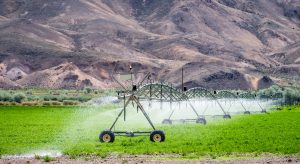In this final section you’ll learn:
- The benefits and challenges associated with farmer-led irrigation development
- Policy recommendations moving forward
Benefits of farmer-led irrigation development
The SAFI project showed that households using irrigation suffer fewer months of food insecurity and have better housing and higher indices of asset ownership than non-irrigators. Additionally, an overwhelming majority (84%) of irrigators consider that irrigated crops deliver at least half of their income. Farmer-led irrigation development thus offers benefits in terms of increased income and economic growth.
Where governments and donors have supported farmer-led irrigation development, the benefits are typically achieved at much lower public investment costs (USD2-4000/ha) than those associated with large-scale irrigation (USD10-20,000/ha). In part, this is because irrigation development that is farmer-led is associated with partial water control and smaller-scale infrastructure development than state and donor-supported investments.
Where farmers themselves are investing labour, capital and land in irrigation, the cost to African government budgets is further reduced. In this way, farmer-led irrigation development may offer a strategy through which governments can invest less to achieve their agricultural productivity and food security goals.
Farmer-led irrigation development builds on farmers’ own knowledge of the local variability of land and water resources, potentially making it more responsive and adaptable to environmental change.
Risks of farmer-led irrigation development
Increasing irrigation may raise competition for water, not just among irrigators but between irrigation and other sectors, such as hydropower and municipal water supplies. Farmer-led irrigation development thus poses challenges of both monitoring and regulation to government agencies responsible for planning land and water resource management.
Rural economies in sub-Saharan Africa need to create employment and diversify agriculture. Irrigators tend to have more land and are more likely to hire labour than non-irrigators. Thus, while the agricultural intensification that farmer-led irrigation development promotes will raise irrigators’ incomes and generate new employment, it may also accelerate social inequality, across generations and gender. In terms of gender, only 16% of irrigating households examined in the SAFI project were female-headed compared to 26% of non-irrigating households. Further questions arise over gender differences in household labour in irrigated fields and ownership of irrigated crops.
Increased fertiliser and pesticide use among irrigators raises downstream pollution risks, particularly where technical advice on input use may be lacking. Additional health risks may arise from the use of non-treated wastewater to irrigate vegetables in urban and peri-urban areas.
Finally there is a risk that centralised irrigation planning authorities may respond to farmer-led irrigation development in ways that over-regulate farmers’ irrigation activities and reduce their dynamic and entrepreneurial character. In this regard, farmer-led irrigation development poses particular challenges to legislative and regulatory bodies which need to create regulatory frameworks that are enabling of small-scale irrigation initiatives while mitigating the risks.
Attention must also be paid to the politics of water resource allocation. Once small-scale farmers are no longer recognised as “non-commercial subsistence cultivators of rain fed crops” but rather as “entrepreneurial users of (in aggregate) major quantities of water“, they would move into a highly politicised policy arena in which the politics of water allocation is dominated by highly organised and influential lobby groups such as:
- hydropower;
- urban water supply;
- wildlife tourism;
- international investors.
All these groups have experience of gaining preferential access to water at the expense of agriculture.
We know from talking to policy makers that farmers are seen as wasteful users of water. This may be further accentuated by a policy environment shaped by international development agencies’ pre-occupations with water conservation.
A key policy question for small-scale farmers is whether they have water rights when they develop irrigation. If farmers pay water charges they acquire water rights; conversely, if they do not pay charges, their rights to water may be ignored by authorities responsible for water resource management. In African contexts the question of how to facilitate and regulate water-use by small-scale farmers remains a policy challenge.
A particular problem is that many trained engineers expect irrigation to look like this:
Yet in reality, African landscapes in which farmers have developed irrigation more closely resemble this:


